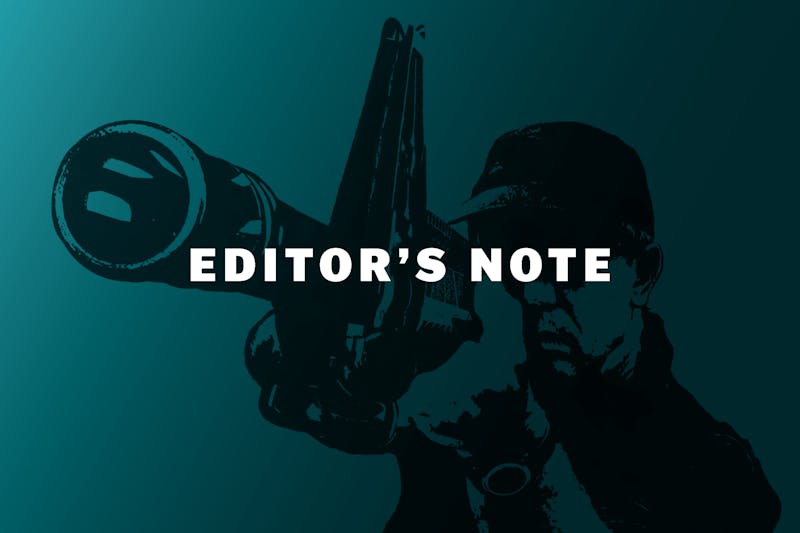
This is an especially reactive time in American political life. Outrage comes fast and runs high. So perhaps I should say a few words about a magazine cover that invokes the word terror in relation to the way the National Rifle Association promotes the American gun industry.
One of the more arresting statistics in Elliott Woods’s feature story for us this month is, by way of a Harvard-Northeastern study from 2016, that 3 percent of the U.S. population owns roughly half the 265 million firearms in circulation around the country. Overall, more people aren’t buying guns; a small ratio of gun owners are stocking up. As Woods cites the observation of Deb Azrael, an author of the study: “What I see is a population that is living in fear. They are buying handguns to protect themselves against bad guys, they store their guns ready-to-use because of bad guys, and they believe that their guns make them safer.” While there’s no plausible correlation between fear and gun ownership, there is, as Woods shows, too plausible a causation between fear and gun hoarding—or fear and the rising market share of the AR-15-style semi-automatic rifle.
Few would imagine any equivalence between this kind of fear and the horribly colloquial sense terror has taken on in our world. I certainly wouldn’t. But in plain language, words don’t always equate as much as they express continuities of meaning. The modern use of violence to create and exploit terror goes back to the Jacobins of the French Revolution, through the Ku Klux Klan, the Provisional IRA, and ISIS, along with every other terrorist organization active today. None of them are equivalent. But the terrorist’s direct use of violence and the deliberate creation-exploitation of terror aren’t equivalent either; they’re two entirely separate things. And the latter is integral to how the American gun industry now works.
It’s also integral to how the lives of American high school kids have been transformed. Their odds of experiencing gun violence may still be low, but their fear of it is now pervasive. And it’s pervasive because of the frequency across the United States of specific forms of mass killing enabled precisely by the ready availability of weapon types that the gun industry needs on the market to drive growth—and that the industry sells to consumers precisely by cultivating their own fear of bad guys. Which is why the political initiative of the Parkland survivors and the #NeverAgain movement they’ve inspired are so remarkable. These kids don’t want transparent school bags and metal detectors, let alone armed teachers; they want to break the gun industry’s cycle of fear altogether, through civic action and democratic efficacy.